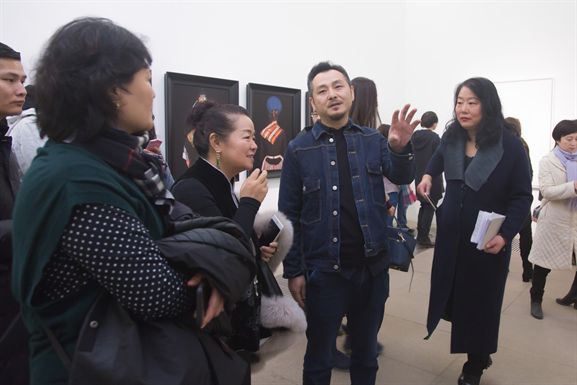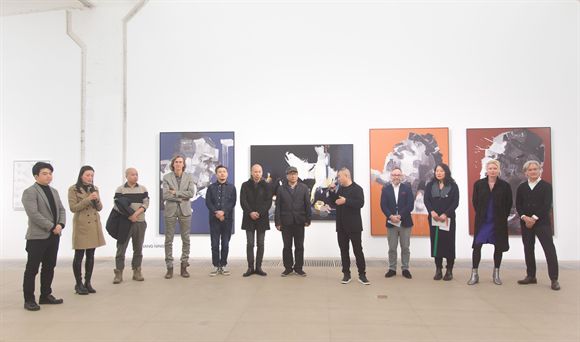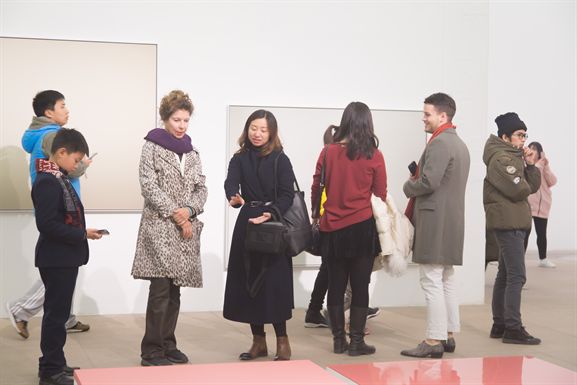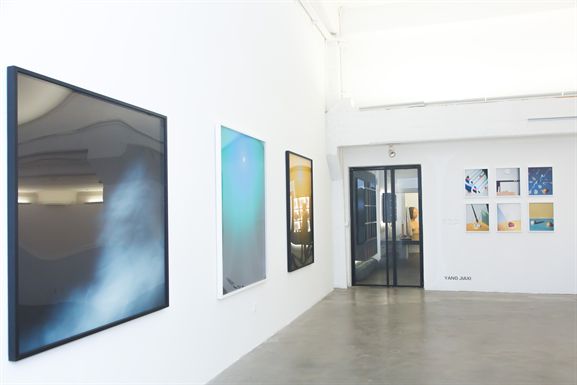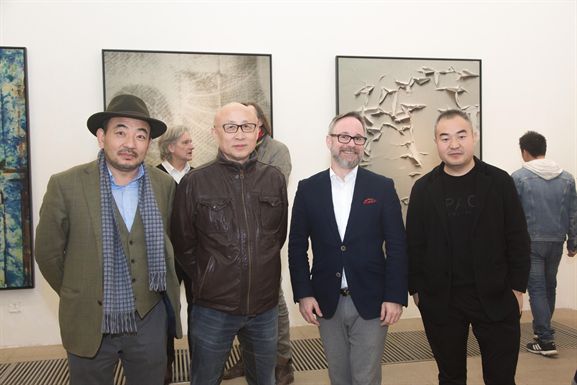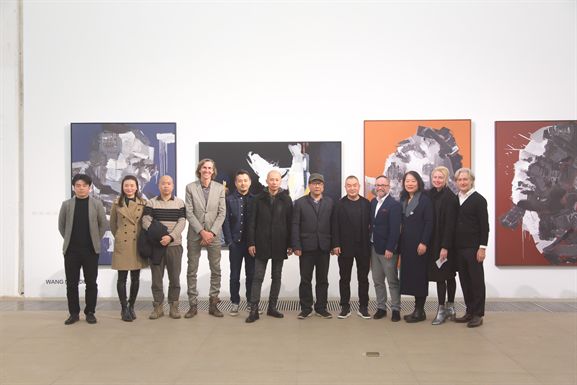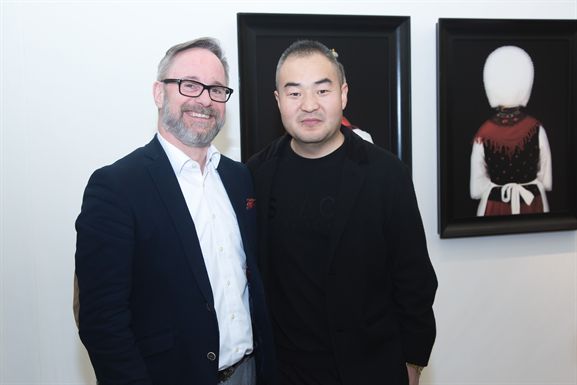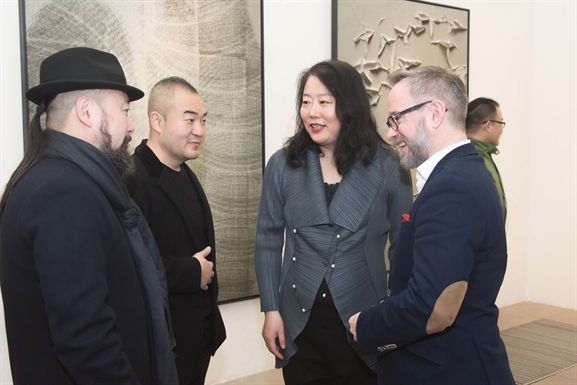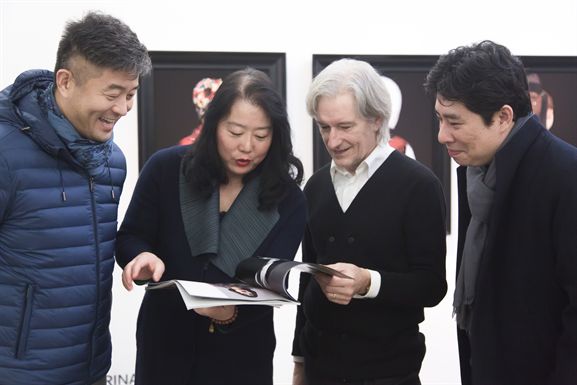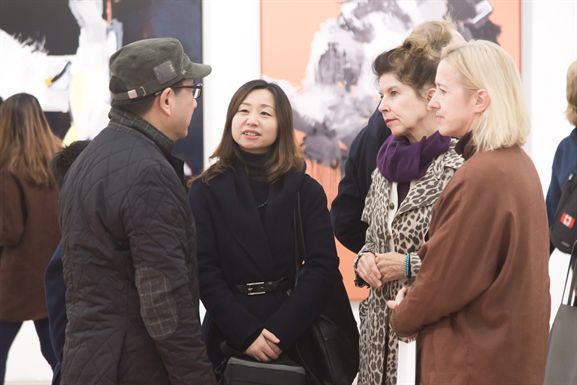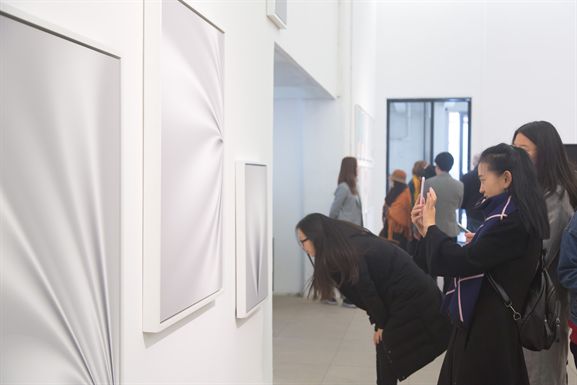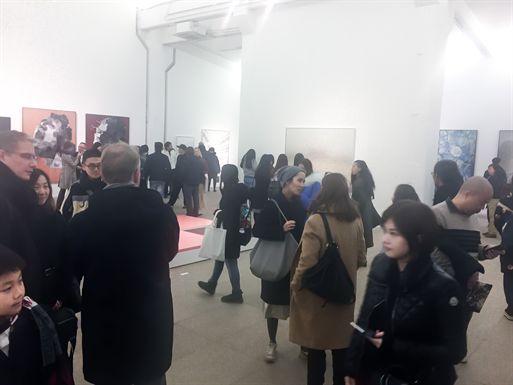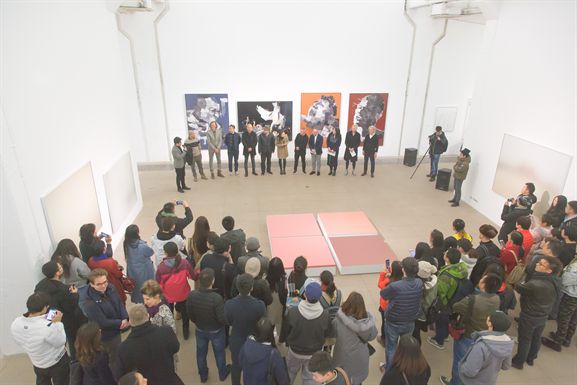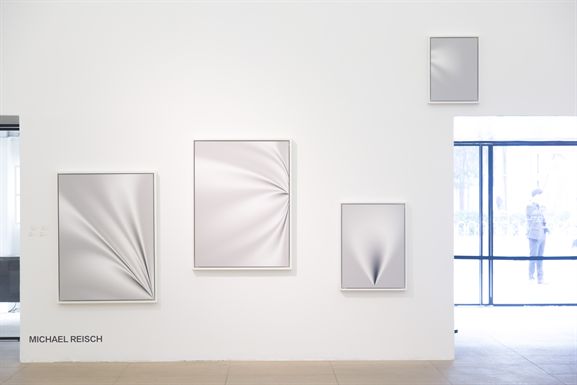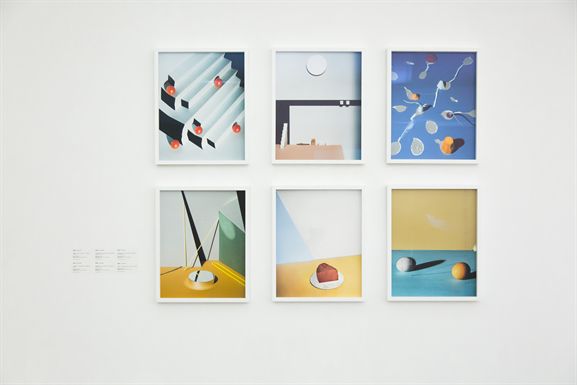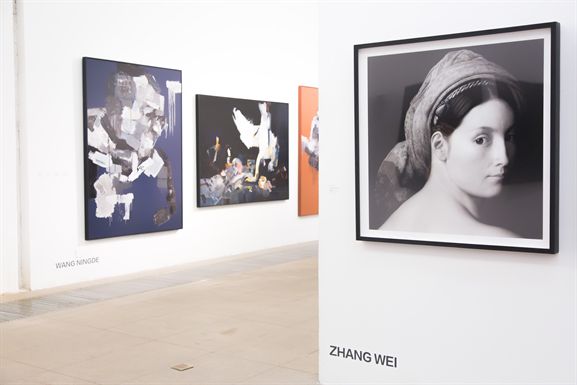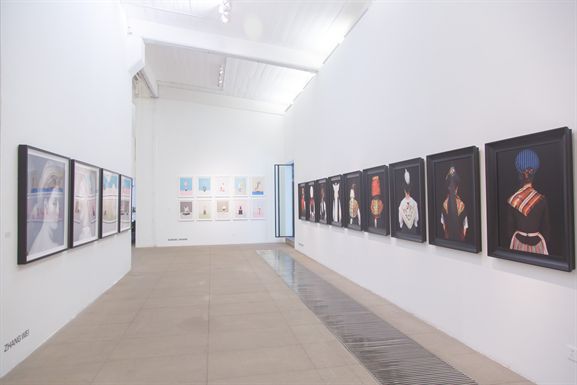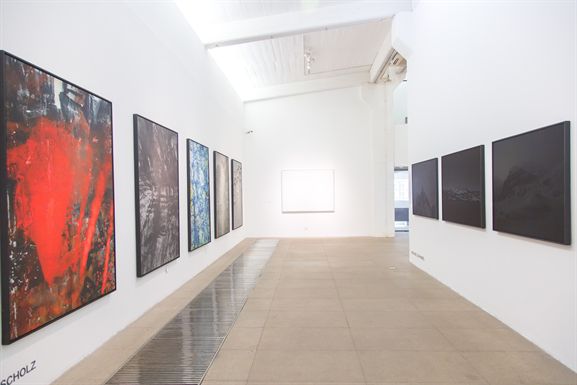Nov 25 - Dec 23, 2017
Press Release
Curator Article
Photography in the age of poSt-factualiSm
Since its invention in the first third of the 19th century, the pri-mary focus of photography has been more or less on the objec-tive documentation of the visible world through the reproduction of this in the form of images ‘drawn with light’. Over the decades,an at times embittered battle gradually aroused between the new medium of photography and the time-honoured medium of painting, the raison d‘être of which seemed at first to be threat-ened by the new imaging technology. And although, especially since the 1920s, a peaceful coexistence and, in some instances,also a symbiose between the two media slowly began to crys-tallise, it would still be several decades before art critics and museum professionals would accept photography as an artistic medium on equal footing with painting and sculpture. This led,however, to a new internal discord within the medium of pho-tography that ultimately resulted in a (provisionally) final split, sothat, today, one is forced to differentiate between the mutually exclusive fields of artistic and applied photography.
The exhibition Beyond the Sphere of Reproduction features a juxtaposition of six Chinese and six German photographers, who broach the issue of and thus question this divergence between the two fractions of contemporary photography. Disambiguation plays a key role here. What is actually meant by documentation
and reproduction? Does a photograph have to have something from the real world as its starting point, or can it be a pure visual invention? And how is a photographic image produced in the first place? Does one need a camera, or can one ‘construct’ an image with the help of a computer – or perhaps let nature create it? Does a photograph have to be legible in order to do justice to its function as documentation? And conversely – how do we deal with precisely photographed images of objects and spaces that neither document nor comment on these, but rather ‘merely’ present them. An image for the sake of an image, so to speak.
Between documentation and conStruction
With her current series, The Horizontal Mode of a Waking Life(2014), the New York-based Chinese photographic artist JiaxiYang addresses the interconnection between the image and theobject on a highly conceptual level. Through unusual combina-tions and shifts of context, the banal and inconspicuous suddenlybecome striking and meaningful. Yet nothing is narrated, but rather ‘merely’ presented. Although her works are often asso-ciated with the Duchampian principle of the ready-made, after they are photographed, the objects and food items that appear so peculiar in her images are returned to the profane banality of everyday life. All that remains is a photographic documentation of an absurd, almost surrealist moment – like ‘the chance meet-ing on a dissecting table of a sewing machine and an umbrella’(Comte de Lautréamont, 1868).With his musée imaginaire series(2012/2013), Samuel Henneal so takes art and its history as his starting point. The book as a partly textual, partly photographic documentation of art his-torical developments and personalities becomes itself an objet d’art, which, in turn, is photographed and thus transported Between documentation and conStruction With her current series, The Horizontal Mode of a Waking Life(2014), the New York-based Chinese photographic artist Jiaxi Yang addresses the interconnection between the image and the object on a highly conceptual level. Through unusual combina-tions and shifts of context, the banal and inconspicuous suddenly become striking and meaningful. Yet nothing is narrated, but rather ‘merely’ presented. Although her works are often asso-ciated with the Duchampian principle of the ready-made, after they are photographed, the objects and food items that appear so peculiar in her images are returned to the profane banality of everyday life. All that remains is a photographic documentation of an absurd, almost surrealist moment – like ‘the chance meet-ing on a dissecting table of a sewing machine and an umbrella’(Comte de Lautréamont, 1868). With his musée imaginaire series(2012/2013), Samuel Hennealso takes art and its history as his starting point. The book asa partly textual, partly photographic documentation of art his-torical developments and personalities becomes itself an objet d’art, which, in turn, is photographed and thus transported back into the second dimension. The chosen perspective of the book-object leads, however, to an optical illusion, whereby the reproduction appears to protrude into real space. In an earlier group of works, Henne addresses the interrelationship between the image and the object even more directly. His staged com-positions from the series something specific about everything(2010/11) are closely related to the absurd visual inventions of Jiaxi Yang, whereby, with the targeted adoption of the aesthetics of commercial product photography, he incorporates a second level, which questions the division of artistic and applied pho-tography, staging and documentation, abstraction and figura-tion. The seemingly ephemeral works from the Blank series (since 2010) by the Düsseldorf-based photographic artist Andreas Ge-feller also oscillate between documentation and construction.The objectivity of photography, as well as its purported claim to being an accurate (i.e. truthful) depiction of reality, is called into question. The nocturnal images of large cities, motorway junc-tions, and industrial sites are so extremely overexposed that the illuminated sections appear to dissolve, while the darker areas are just barely visible as colour accents and linear structures. Instead of providing documents of modern urban living, Gefeller presents the viewer with almost poetic moments on the thresh-old between light and darkness, speed and tranquillity.
An alternatiVe View of nature
The placidity of darkness also plays a decisive role in MichaelSchnabel’s nearly monochrome Alpine landscapes. His Silent Mountains (since 2003) were also photographed at night. Unlike Andreas Gefeller’s urban images, however, Schnabel’s ‘moun-tainscapes’ are created without artificial light and are thus marked by darkness, as well as by slowness and contemplation. The images radiate a sense of monumental tranquillity. In a fur-ther, also nearly monochrome series, White Land (since 2008),the snow-covered landscapes seem to dissolve in a Zen-like
manner into the chasteness and contemplation of pure light.Here as well, nothing is documented, but rather transformedinto a quiet, haiku-like poesy.Nature also takes centre stage in the current series by the Hang-
zhou-based photographer Shan Feiming, Waking from Hiberna-tion (since 2012). Like Michael Schnabel, Shan is interested here in a more meditative view of natural phenomena – in this case,the third phase of the Chinese lunar calendar, Jing Zhé, whichcan also be translated as ‘awakening of the insects’. The artist thus refers here to a new beginning after a long period of hiber-nation – a new beginning that could also refer to the artist’s own
biography, as well as to the development of his native country. The photos are reminiscent of the invented landscapes of tradi-tional Chinese ink painting, which, in turn, is inseparable from the ideas and concepts behind ancient Chinese philosophy and literature. With his Dark Addiction series (2013), Jiang Pengyi extends the artistic investigation of the phenomenon of light to include the interconnection between time and space. Jiang, who commutes between the mega-city of Beijing and the more picturesque university town of Hangzhou, refers back to the approximately one-hundred-year-old camera-less photographic technique of the photogram, expanding it by the dimension of time. For his enigmatic images, the artist hands over the creative process to nature in the form of fireflies which, captured in a cardboard box, expose a strip of light-sensitive film. The pulsating light and
flight paths of the fireflies leave traces, which become visible in the photographic developing process.
On Both SideS of the Border to aBStraction
In contrast to this, the abstract compositions created by Michael Reisch without the help of a camera could not be more distanced from nature and natural phenomena. Here, there is no real existing model; the process of abstracting an object is merely feigned, since the compositions have been created ex-clusively in the computer. The question must thus be raised as to whether Reisch’s works can even be described as photography. The works are nevertheless based on an in-depth assessment of the defining characteristics of photography in the digital age. For a further group of works, the algorithmically generated pictorial objects are transported into real space with the help of a 3D printer and then photographed according to the conventional standards of object photography. The results remain, however, completely abstract and evade any attempts at categorisation in terms of documentation. Here, photography is not a means of reproduction, but rather acts generatively: an image – and thus a reality of sorts – is literally created, or rather generated. Ostensibly equally abstract are the images from the Marks and Traces series (since 2012) by the Becher-student Kris Scholz. His meticulously photographed images of floors and work surfaces from places of both artistic and political import look like abstract expressionist paintings – an impression that is further intensi-fied by their large formats, as well as by the use of stretched linen canvas instead of photo paper. Yet equally important is the question as to who left these marks and traces. His images ‘fail’ as documents, since they provide no useful information – yet, as poetic images, they offer a great deal of freedom for interpreta-tion on the part of the viewer. With the photographs from the 18 % Gray series(since 2009) by Xu Yong, the viewer is confronted with soft, faded clouds of colour which, despite the fact that they have been taken at im-portant locations from the artist’s personal biography, appear completely abstract: e.g. the courtyard where he played as an 11-year-old child or the river into which the ashes of his de-ceased grandfather were strewn. Here, as with memory, only a fraction of what was actually seen and experienced remains tangible.
‘Other‘ portraitS
Identity plays a central role in the portrait series German Tra-ditional Costume (since 2010) by the Düsseldorf-based multi-talent Corina Gertz, whereby we are dealing here less with indi-viduals than with an affiliation to a particular geographic region.The persons depicted are thus merely surrogates. What is more,the people portrayed are anonymised even further by the factthat their backs are turned to the viewer, which directs attention towards their traditional costumes as an identity-conveying ele-ment. As a photographer,filmmaker and fashion designer, Gertz is fully aware of the significance of clothing and fashion as a means of nonverbal communication.The painterly portraits from Wang Ningde’s No Name series(since 2015) also revolve around the theme of communication.Since the placing of classified ads in the larger Chinese cities is relatively expensive and complicated, many try the round-about way of illegally posting bills anywhere possible: on façades and lampposts, in passageways and tube stations. Since the au-thorities cannot keep up with removing these illegal ‘adverts’,the surfaces are often painted over in a makeshift and patch-work-like manner. Wang photographs and thus appropriates the painted-over surfaces and combines these with the help of an image processing program to create painterly portraits of name-less city dwellers, who, with such illicit posts, practice a kind ofsubtle, everyday civil disobedience.Equally ‘composed’ are also the ostensibly historical portraits from the Artificial Theater series (since 2014) by Zhang Wei.Using hundreds of pictures of faces of his fellow countrymen,he creates deceptively real ‘portraits’ of famous personalities–both historical and living – from the fields of politics, science,business, pop culture and even art history. The hybrid charac-ter of his portraits can be seen as a kind of meditation on hisperception of the rapid changes in his home country, which is absorbing increasingly more influences from the West. At the same time, he directs attention to the artificial nature of such ‘important’ personalities, who, on the one hand, wear masks and, on the other hand, serve as projection surfaces. Here aswell, the question is raised as to the documentary function – and thus the truthfulness – of photography.
A preliminary final concluSion
With each of the participants in the exhibition, the manifold possibilities of photography are sounded out and in many cases also expanded. Whether figurative or abstract, analogue or dig-ital, with or without the use of a camera – it is less a matter of representation than it is of presentation. The works on view open new perspectives onto the role of photography in the age of post-factualism. And when, in many cases, the pictures in this exhibition ‘lie’, the artists are not trying to mislead the viewer, but rather to shed light on various ‘truths’. That which we think we see is often not that what we actually do see. The works in this exhibition demand a second, more intensive glance and challenge us as viewers to question our own notions and habits of visual perception.
Gérard A. Goodrow

